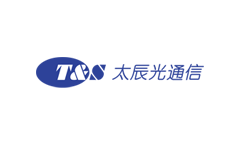What Are the 40G QSFQ+ Fiber Optical Transceivers and Their Differences?

40G networks are widely used in data centers. 40G fiber
optical transceivers are the mainstream devices for interconnection
between data center equipment. So what are the main types of 40G fiber
optical transceivers? What are the differences between them?
The three types of 40G QSFP are 40G QSFP+ SR4, 40G QSFP+ LR4 and 40G QSFP+ PSM LR4. They are all compliant with 40G Ethernet, and data center switches support Infiniband 4xSDR, DDR and QSR. It has four data transmission channels, each with a transmission rate of about 10Gbps, and the simultaneous transmission of four channels can achieve a transmission rate of 40Gbps. It also supports hot-swappable QSFP package with an ultra-low power consumption.
1. 40G QSFP+ SR4 transceiver
In 40G network transmission, it is usually used with MPO/MTP connectors. It uses multi-mode optical fiber for transmission. When matched with OM3 multi-mode optical fiber jumper, it can support a transmission distance of 100 meters, and when it is matched with multi-mode optical fiber OM4 jumper, it can support a transmission distance of 150 meters;
2. 40G QSFP+ LR4 fiber optical transceiver
40G QSFP+ LR4 fiber optical transceivers are generally connected with LC connectors, which support hot-swappable electrical interfaces with a lower energy consumption, and support the transmission distance of single-mode optical fiber up to 10km;
3. Comparison of 40G QSFP+ SR4 and 40G QSFP+PSM LR4 fiber optical transceivers
The 40G QSFP+ PSM LR4 fiber optical transceiver utilizes parallel-designed MPO/MTP interfaces with four full-duplex channels, and can achieve a transmission distance of 2km through 8 independent optical cables with single-mode fibers, and supports power consumption <3.5W.
40G QSFP+ SR4 fiber optical transceiver and 40G QSFP+ PSM LR4 transceiver have the same connector type, but 40G QSFP+ SR4 fiber optical transceiver is commonly used for multi-mode fiber transmission, and the transmission distance is short. 40G QSFP+ PSM LR4 fiber optical transceiver is mostly used for single-mode fiber transmission, and the transmission distance is long.
4. 40G LR4 PSM fiber optical transceiver
The working principle of the 40G LR4 PSM fiber optical transceiver is the same as that of the 40G QSFP+ SR4 fiber optical transceiver, which converts the photoelectric signal through the laser array; the 40G LR4 PSM transceiver is suitable for long-distance transmission, and the 40G QSFP+ SR4 fiber optical transceiver is suitable for short-distance transmission.
Compared with the 40G QSFP+ SR4 fiber optical transceiver, although both are suitable for long-distance transmission, the 40G LR4 PSM fiber optical transceiver requires 8 single-mode optical fibers for transmission, and the 40G QSFP+ SR4 fiber optical transceiver only uses 2 single-mode optical fibers for transmission.
- +1 Like
- Add to Favorites
Recommend
- The Difference Between 100G QSFP28 Fiber Optical Transceiver and 100G CFP4 Fiber Optical Transceiver
- What Impact Does The Growing Chatgpt Have on The Fiber Optical Transceiver Market?
- The Ultimate Guide to Fiber Optic Transceiver Modules
- What Are the Specific Classification Methods of Fiber Optical Products?
- Optical Transceiver Interoperability and Compatibility
- What is the Difference Between AOC and Optical Transceiver?
- Why Do 400G Optical Transceiver Prefer QSFP-DD?
- How to Achieve Precise Connection of Optical Fibers with Fiber Connectors?
This document is provided by Sekorm Platform for VIP exclusive service. The copyright is owned by Sekorm. Without authorization, any medias, websites or individual are not allowed to reprint. When authorizing the reprint, the link of www.sekorm.com must be indicated.






























































































































































































































































































































































































































































































































































































































































































































































































































































































